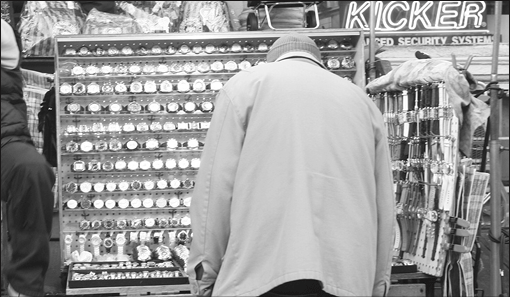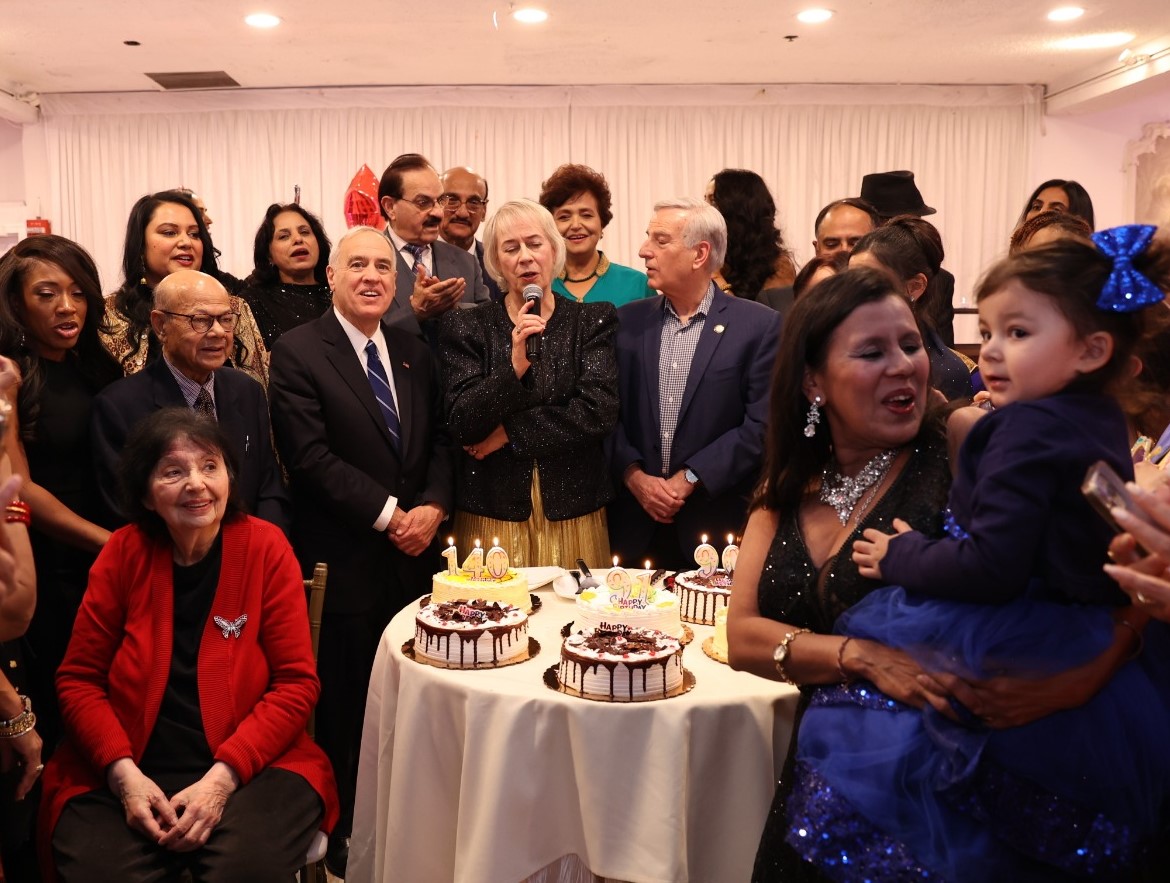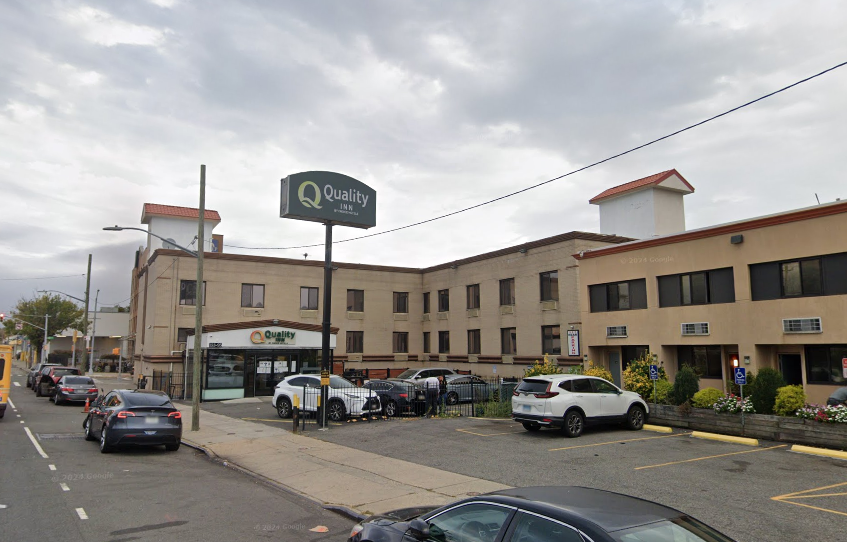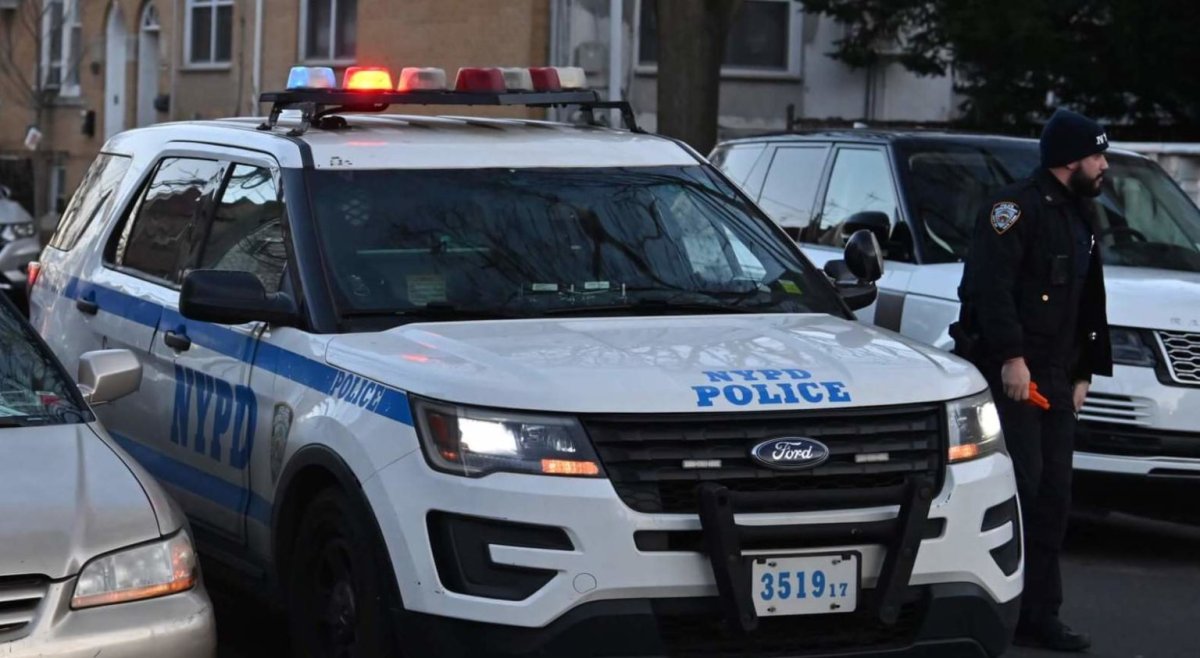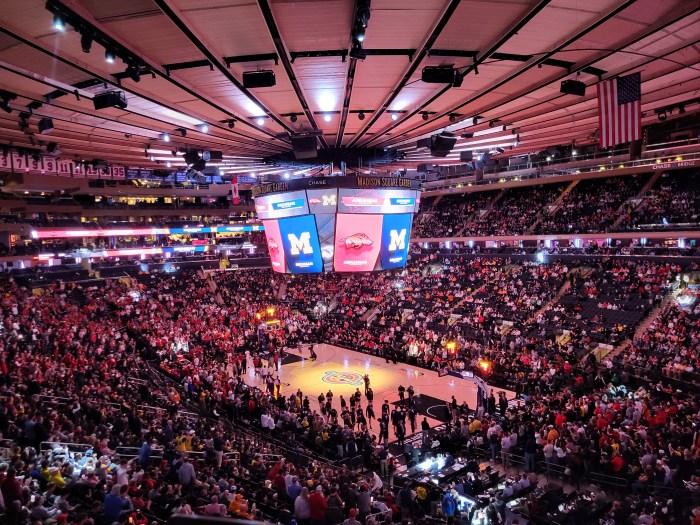By Julie Shapiro
A young Asian woman named Kelly wound her way through the crowds on Canal St. on a recent morning, not looking back. Behind her, a cluster of white middle-aged women and teenage girls struggled to keep up.
The sight raised a red flag for private investigator Andrew Oberfeldt, who spotted the unlikely group from across the street. Oberfeldt quietly joined the end of the line.
Kelly slipped through the door of an antique shop near the corner of Grand St. and Broadway. She led the tourists and Oberfeldt past dusty rows of wooden furniture, down a flight of stairs, through a dim hallway, to an unlabeled white door that opened to a narrow room.
Laughing and growing giddy, the women who crowded in absorbed the sight: High-end, hard-to-find handbags lined the walls from floor to ceiling. The labels and monograms, familiar from magazine pages, glinted in the fluorescent light, boasting names like Gucci, Fendi, Prada, Coach, Chanel and Luis Vuitton.
Kelly shut the door and stood guard over the merchandise, which, if it were authentic, would total hundreds of thousands of dollars.
These bags, though, were fake.
Beside the oohing and ahhing crowd, Oberfeldt, who invited a Downtown Express reporter along, bargained with Kelly over the price of a black Gucci pocketbook and matching wallet. He played the part of an enthusiastic customer convincingly — paying $40 for the two items after bargaining from $55 — but this wasn’t a recreational excursion. Oberfeldt, a former N.Y.P.D. narcotics detective and SWAT team member, works for high-end designers to protect their products from counterfeiting. His 70-person company, ABACUS Investigations & Security, gathers undercover information and provides security for raids.
“The cops are doing what they can do when they can do it,” but police are pressed for time and resources, Oberfeldt said in a telephone interview. “I help the police identify hidden places, people selling in a surreptitious manner, and I identify stuff as counterfeit or not.”
As he walks through Chinatown, Oberfeldt, 46, can point out buildings on every block that either host counterfeit vendors or used to host them. Often, a landlord will illegally subdivide the space and supply tenants with the merchandise they sell, Oberfeldt said.
Each handbag company puts hidden indicators on the bags that show their validity, and then the companies train Oberfeldt in what to look for. In an ever-accelerating race, the counterfeiters replicate the indicators, forcing the handbag companies to create new ones.
Oberfeldt said he didn’t want to list what differentiates fake bags from real ones — for fear that the counterfeit manufacturers will find out — but conscientious shoppers can probably tell from one factor alone: the price. “If [the price] is too good to believe it, it is,” Oberfeldt said. “If you’re buying a $4,000 handbag from a company that’s been around since the 18th century, you’re not going to get it for $100. What do you think it is?”
Oberfeldt, who would not say if he carries a gun, joins the police for criminal raids and conducts civil raids on his own. It is currently not a crime to purchase fake handbags, but when he’s doing raids, Oberfeldt sometimes chastises the customers for supporting an illegal trade. Once, a female customer asked him what the big deal was. When he told her that the bags were fake, she said, “Oh, I’m so sorry — I thought they were stolen.”
Oberfeldt laughed at the memory, then turned serious and said he sees trademark counterfeiting as stealing, too. “Hard work is being stolen,” he said. “Companies are building up their brand with advertising, and then you put my label on there, you’re trying to get more money [than me].” While the profits from fake handbag sales are hard to trace, Oberfeldt says terrorists could benefit.
Oberfeldt only buys the handbags when he needs them for evidence, and he destroys them as soon as he can. He said any employee who comes to work with a counterfeit product is fired on the spot.
To put an end to counterfeiting, Oberfeldt thinks there should be a law that would punish buyers for supporting the trade. He likened the potential effect of a buyer’s law to the effect of criminalizing the solicitation of prostitutes — once johns were punished, there was a huge reduction in street crime, he said.
Oberfeldt works closely with anti-counterfeiting lawyer Heather McDonald, a partner at Baker & Hostetler.
McDonald describes Oberfeldt as “Henry Kissinger and James Bond all wrapped up together.” She is impressed by his undercover skills and said his time on the SWAT team taught him exceptional raid tactics.
But Oberfeldt’s biggest strength is his cultural knowledge and sensitivity, which he learned from teaching behavioral science at the police academy, McDonald said. He meticulously researches the background of the vendors. McDonald remembers the lesson Oberfeldt taught her: “If you treat your adversary with as much respect as you can, things will go as well as they can,” she said.
Oberfeldt is tall and clean-cut, with gray hair and eyes that are hazel behind his sunglasses. He might not look like he keeps up with the latest women’s fashions, but he follows them like a hawk. He reads Harper’s Bazaar and Women’s Wear Daily and knows all the major fashion designers and brands. If he misses a beat, he can count on the vendors beating him to a new trend. “They don’t miss a trick,” Oberfeldt said. “They know the spring line before it comes out.
“I’m trying to keep up with them,” Oberfeldt continued. “What’s on my side is that it’s illegal, and they have to sell to do their job.”
Tourists looking for the perfect addition to their closets aren’t the only ones trolling Chinatown for cheap bags. Suburbanites come into New York to stock up on tens or hundreds of handbags and then return to their hometowns to peddle the bags at Tupperware-like parties or in local beauty salons. When police raid the Canal St. vendors, they often find phone books packed with business cards from around the country.
Oberfeldt measures his success by how difficult his job is. When he first started ABACUS part-time in 1993, the bags were out in the open everywhere and he couldn’t confiscate them fast enough. Over the last 10 years, though, vendors learned the brands his team targets, and it’s not possible to find them on the street anymore.
“With quality-of-life crimes, as good as you can do is force it underground,” he said. Just like the drug trade, forcing transactions underground increases their cost. Whereas one vendor standing out on Canal St. could complete a half-dozen sales a minute, Oberfeldt said vendors of the brands he targets have to work in teams, drawing customers into hidden locations, which takes more manpower and more time.
“You can buy my products,” Oberfeldt said, “but it has to be with a whisper and a nod.”
Some companies don’t hire investigators like Oberfeldt to patrol the streets and don’t even assist police with identifying counterfeits after raids. The bags laid out in the open on tables along Canal St. — Dolce & Gabbana is one of the most common — generally belong to those companies. A Dolce spokesperson did not respond to a request for comment.
“It’s definitely a growing problem, because designer goods continue to gain in popularity,” said McDonald, the lawyer who focuses on anti-counterfeiting enforcement. “There’s always the ‘it’ bag, or the T-shirt Madonna was seen wearing. Whenever you’ve got a society that values brands, you’re going to have a counterfeiting problem.”
Oberfeldt, though, said gentrification could drive counterfeit sales out of Chinatown.
“The Soho-ification of Canal St. will be the kiss of death [for counterfeit vendors],” Oberfeldt said, pointing to a new Bank of America branch in a building that used to be subdivided into vendor stalls. “If the landlord’s getting good money from Banana Republic and Starbucks, they won’t bother with this.”
On a recent morning, Oberfeldt’s last shopping stop of the day was on the crowded and chaotic corner of Canal St. and Broadway. Young Asian men and women thrust glossy catalogue pages at passersby, calling out brand names. Oberfeldt followed one into a white-paneled stall draped in fake purses. When he asked about the difficult-to-find Coach brand for this reporter, the store’s proprietors looked over their shoulders, then quickly unlocked and swung open a hidden door in the back of their shop. Inside, in a room no bigger than a closet, were the hundreds of bags that were too dangerous to display more openly.
The vendor, a middle-aged Asian man, locked the door behind me and rushed the transaction, demanding “Which one you want? This one? This one?” We bargained from $40 down to $35, then he asked, “Only one? You sure, only one? No more?” The vendor wrapped the selected bag — a Coach satchel in several shades of brown — in black plastic and demanded the money before unlocking the door. Oberfeldt then tried to bargain down the price further and walked away after he and the vendor could not agree.
The locks and hidden rooms should make any customer nervous, Oberfeldt said. But young women regularly follow vendors down alleys or into vans, without thinking twice. To make matters worse, criminals target the vendors because of all the cash lying around. Oberfeldt has been in tense standoffs involving force, where he put his SWAT team training to use.
The violence also poses a problem for police officers, Oberfeldt said, citing an officer who was thrown through a watch vendor’s window several months ago.
“Scared people are dangerous,” he said.
Julie@DowntownExpress.com



